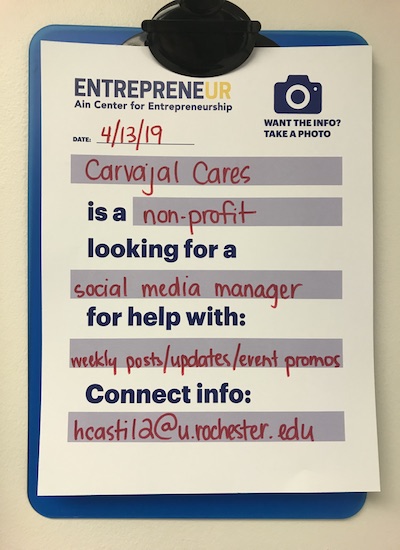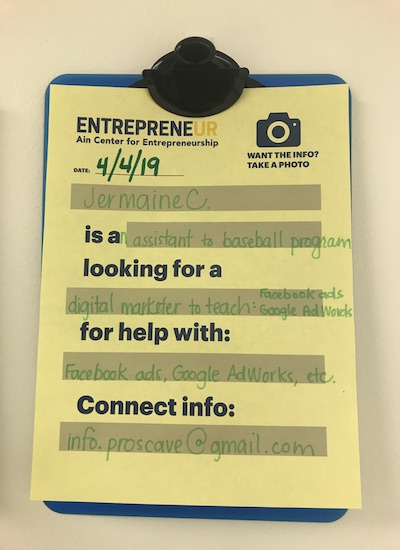UB Case Competition
In April, Team Calorie Surplus – Xueying “Shelley” Chen, Carolina Lion He, and Shengyang “Shawn” Wu – participated in the University at Buffalo Case Competition, where each team was given a business case to solve. The team learned valuable lessons throughout the competition that they want to share with fellow student entrepreneurs.
UB Case Competition
In April, Team Calorie Surplus participated in the University at Buffalo Case Competition, where each team was given a business case to solve. The assigned case – whether or not a Chinese-born entrepreneur, Jane, should enter the pearl market in Canada – required analysis and a presentation to a panel of judges. During the semi-final round of the competition, these presentations were twenty-minutes long, followed by a ten-minute Q&A session. The team, made up of Shengyang “Shawn” Wu, Xueying “Shelley” Chen, and Carolina Lion He, said it was an intellectually stimulating experience because every minute they were challenged to come up with solutions, supported by valid evidence.

Team Calorie Surplus during the University at Buffalo’s Case Competition.
We booked a bus to Buffalo and checked into the hotel. The first day was hosted at the Buffalo Club, a private club with a long history (we heard it was once connected to the White House when President Reagan was in the office). The welcome event was a great networking opportunity where we connected with professionals who work at Bank of America, Citibank, and Deloitte. We also spoke to MBA students who had ample work experience.
While we did not advance to the final competition, we learned plenty of lessons from people we were fortunate to meet at the competition. Below, we will tell you some key takeaways from our experiences and participation in this competition.

The team in Buffalo (from left to right): Xueying “Shelley” Chen ’19, Carolina Lion He ’21, and Shengyang “Shawn” Wu ’21.
Xueying “Shelley” Chen ’19 is a researcher, activist and writer of social entrepreneurship and a believer of impact-driven businesses. She thinks business is a vehicle to deliver profitable, sustainable and socially responsible returns. Shelley puts human-centered impact in the core of her daily business practice. Additionally, Shelley is an active member of the UR entrepreneurial community and she is a member of the Ain Team – a group of elite student ambassadors chosen to promote and increase the visibility of the department and the MS in TEAM program.
5 Storytelling Tips
On Monday, March 25, the Ain Center hosted the third and final Mark Ain Business Model Workshop of 2019. Building on the fall Foundry Forum workshops, this series is designed to help entrepreneurs prepare for upcoming business plan competitions. This workshop – Startup Storytelling: Become a Master of Pitching – helped students learn about how to pitch a venture and tell a compelling story. We’ve summarized five key points.
5 Storytelling Tips
By Ain CFE Staff
“Marketing is no longer about the stuff you make, but about the stories you tell,” writes Seth Godin. A fantastic idea can’t sell itself – it needs a powerful narrative to grow and take on a life of its own. Whether trying to attain funding or recruit new team members, a well-structured story can make all the difference.
On March 25, Kathryn Cartini (Partner, Chloe Capital; COO, Upstate Venture Connect; Founder, Peacock Media) spoke to students about building relationship capital and how that factors into storytelling. This was the third and final session in the 2019 Mark Ain Business Model Workshops. Held to help prepare students for our upcoming business plan competitions, the Mark Ain Workshops build on the more soft-skill-focused Foundry Forums held during the fall semester. Below are 5 key points drawn from the event.
If you have any questions about pitching or learning more about any of the topics discussed during the workshop, please contact the Ain Center at AinCFE@rochester.edu or meet with one of our Experts-in-Residence.




